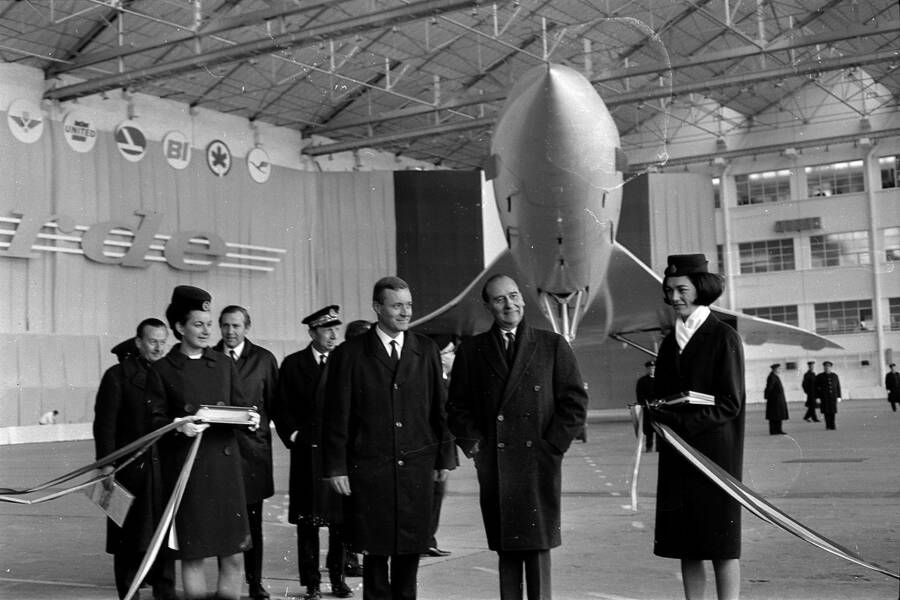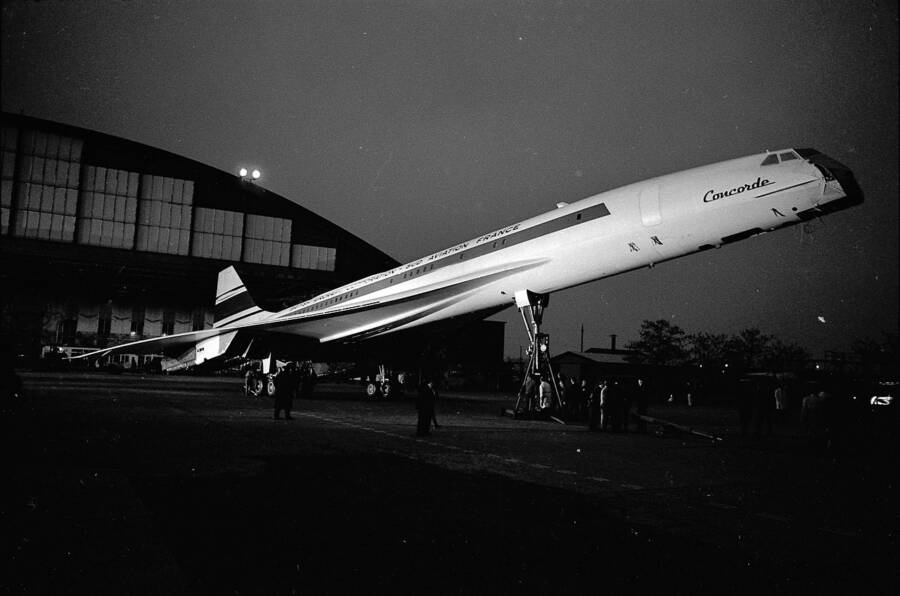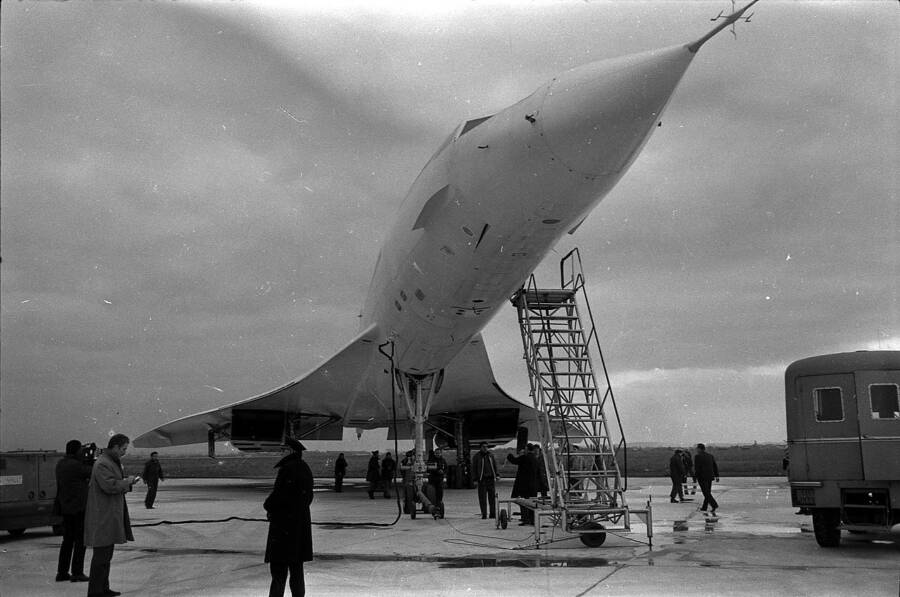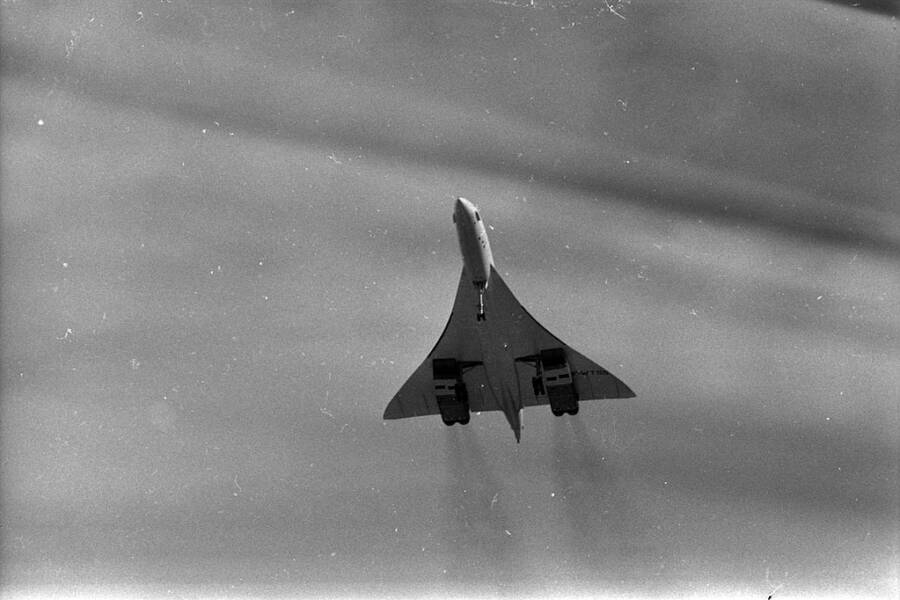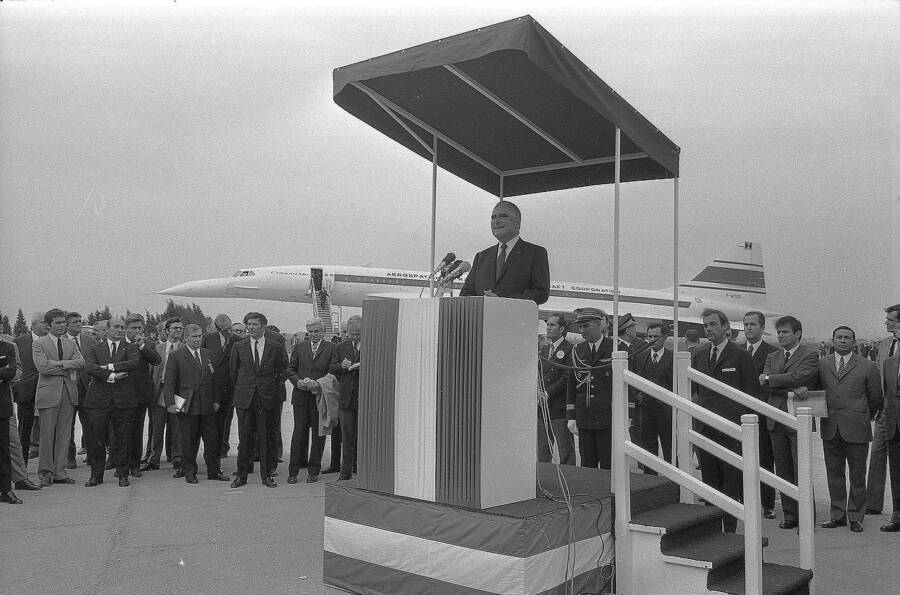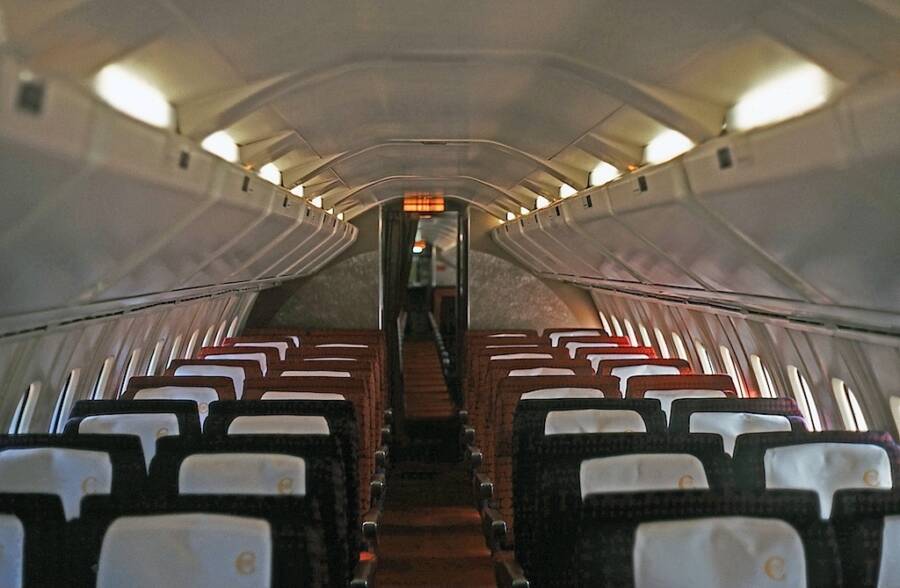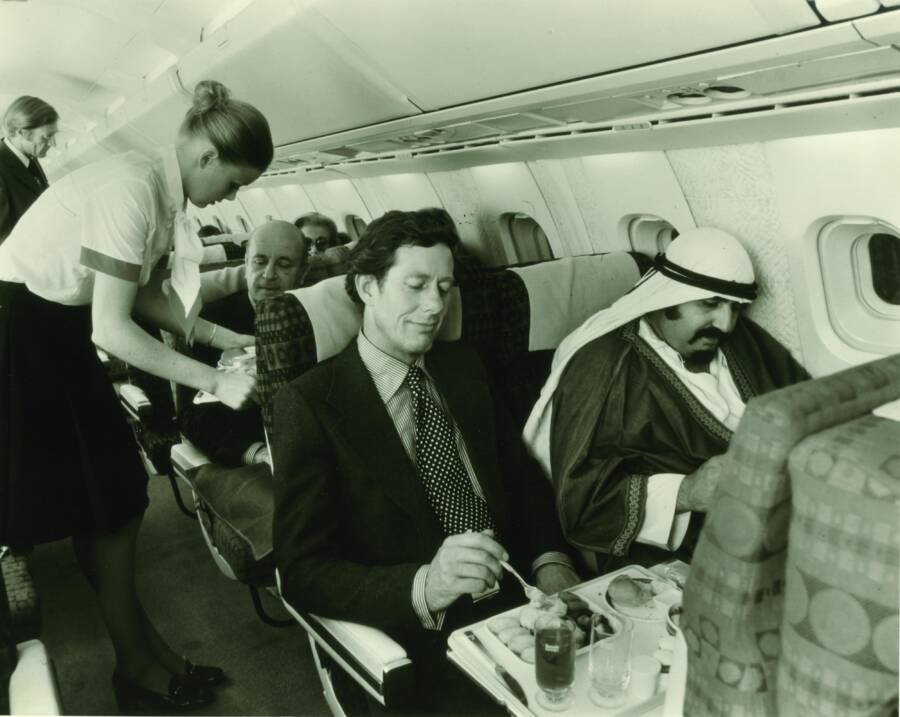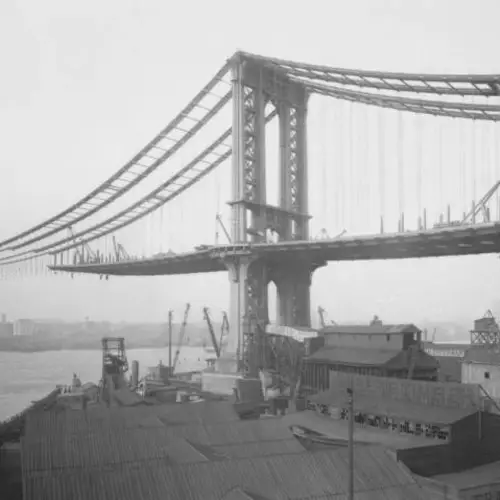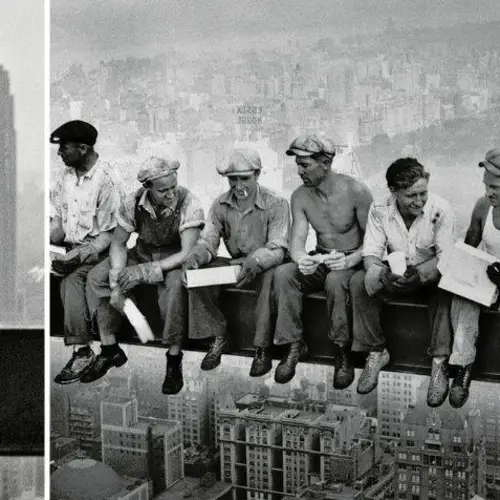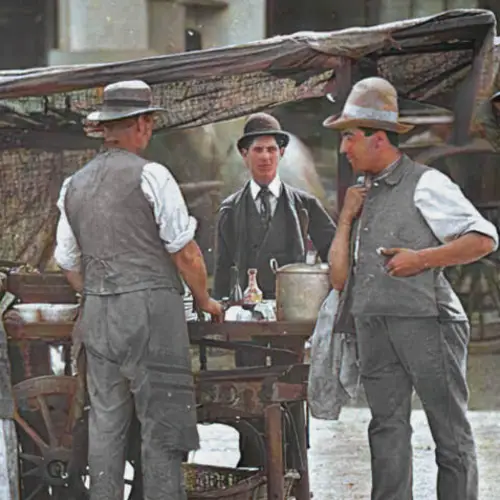Capable of flying 1,350 miles per hour at 60,000 feet, the Concorde was a supersonic marvel — so why was it discontinued?
For almost 30 years, it was possible to fly from London to New York in about three hours. Not only that, but it was possible to fly in a plane that could go faster and soar higher than other commercial aircraft. This was the Concorde, a supersonic jet that was in service from 1976 until 2003.
The Concorde was so fast that British Airways boasted that its passengers could "arrive before you leave" (since they traveled faster than the time zones changed). It was so luxurious that round-trip tickets cost about $12,000 by the late 1990s. And it flew so high into the stratosphere — 60,000 feet — that passengers could see the curvature of the Earth.
But the Concorde ultimately flew for just 27 years. It was retired in 2003, and it can be found in museums today. So what happened to it?
In the gallery above, look through the most striking photos of the Concorde, from its early beginnings to its final flight. And, below, discover the fascinating history of the super fast — but short-lived — supersonic jet.
Developing A Plane That Could Fly Faster Than The Speed Of Sound
Fifteen years after pilot Chuck Yeager broke the sound barrier, France and Britain came together to develop a commercial airliner capable of flying faster than the speed of sound. In 1962, they struck a formal agreement and named the project "Concorde," in a nod to their international cooperation.
Their project proved to be more successful than the Soviet version, Tu-144. After construction of the Concorde began in 1965 — a joint effort between Sud Aviation (now part of Airbus) and the British Aircraft Corporation — the plane took its first successful test flight on March 2, 1969, in Toulouse, France. The first British test flight took place near Bristol a month later.
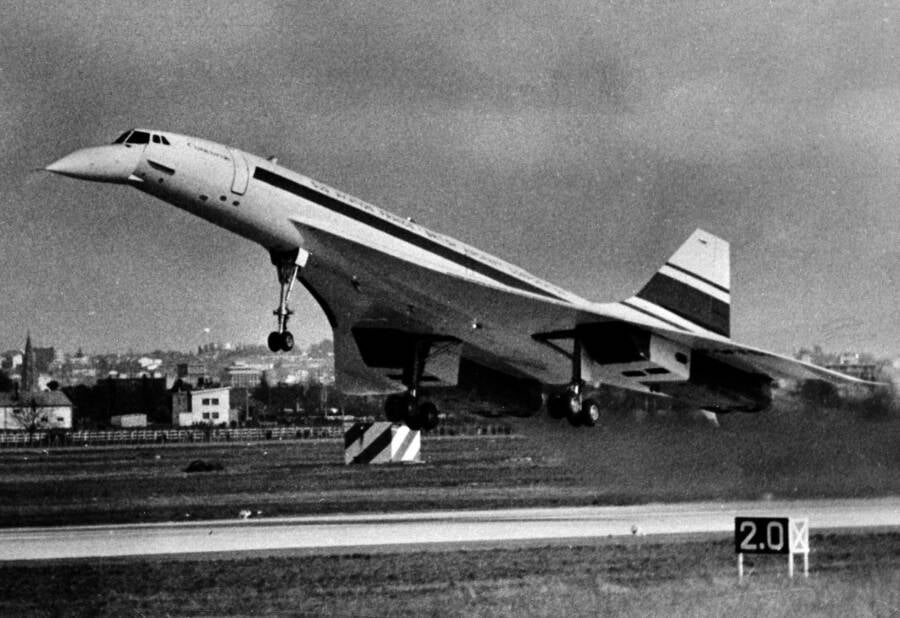
Archives municipales de ToulouseThe Concorde making its first flight on March 2, 1969. The New York Times compared the plane to an "ungainly goose."
Reactions to the first British test flight were mixed. Though The New York Times dutifully noted the plane's futuristic features and ability to fly between New York and London in about three hours, it also said that the Concorde's "appearance at take-off was that of an ungainly goose on the run."
But the Concorde would soon dazzle the world — if you could afford it.
The Supersonic Rise Of The Concorde
The Concorde was fast. It could fly to incredible heights. And not only did it offer its passengers excellent service, but the plane was also a work of art.
It didn't fly like other planes — and it didn't look like them either. It had a slim fuselage, a distinctive droop nose, and wide, curved wings that almost made it look like a space shuttle. The plane had a turbojet engine, which allowed it to reach speeds of 1,350 miles per hour, and it could reach eye-watering heights of 60,000 feet. Though the windows on the Concorde were small, they offered passengers stunning views of the curvature of the Earth.
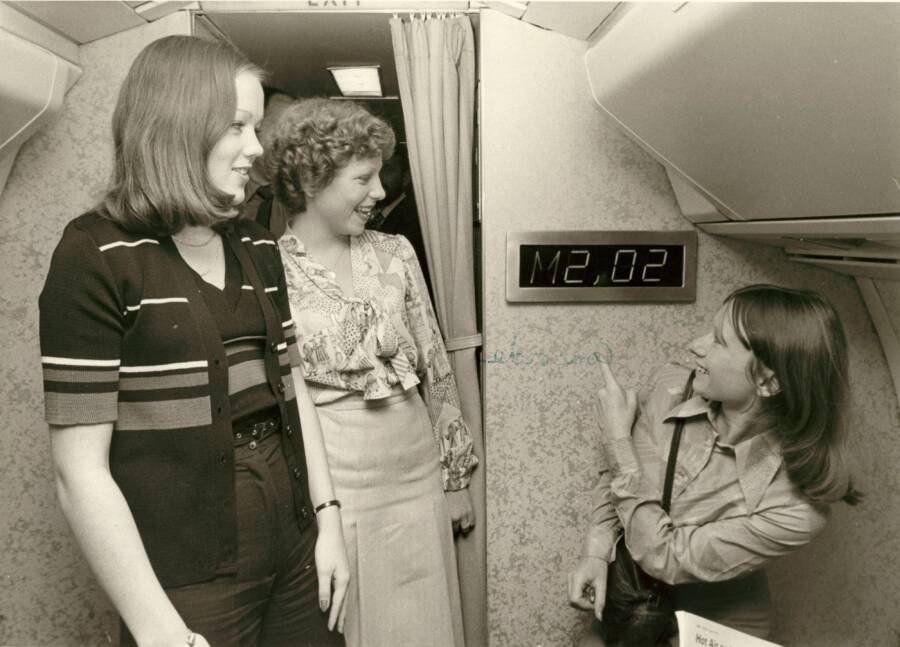
Chronicle/Alamy Stock PhotoA display in the Concorde's cabin that showed its Mach number.
Just 20 Concordes were made, and they were only flown by Air France and British Airways (by no coincidence, these were both state-run airlines at the time, with no choice in the matter). During the plane's 27-year history, it mostly flew between New York and London and New York and Paris, and it could make the transatlantic jump in just about three hours.
The average round-trip ticket cost about $12,000 by the late 1990s and early 2000s (over $20,000 today). But for most wealthy passengers, they felt that the high price was worth it. Not only could they indulge in caviar and champagne during the short trip, but the experience of flying on the Concorde was something that most people didn't forget quickly.
"Between courses, I looked up and saw that we had reached Mach 2 — 1,350 mph, faster than Earth rotates," Smithsonian curator Robert van der Linden recalled in a piece for Smithsonian Magazine in 2004. "Our altitude varied between 52,000 and 59,000 feet, far above the rest of the air traffic. I noticed that my window was quite warm, and I could feel heat radiating from the fuselage, whose aluminum skin had heated to over 248 degrees Fahrenheit. The sky above us was a stunning dark purple."
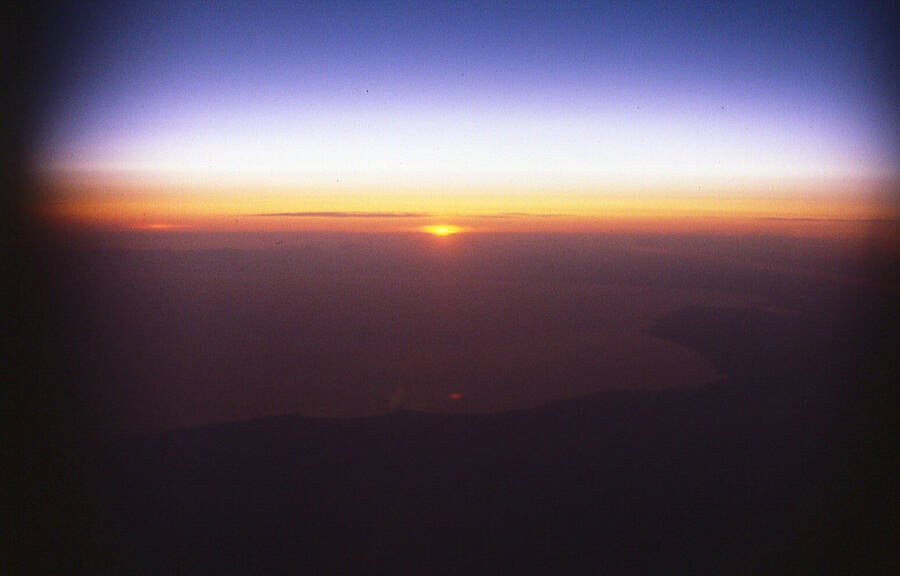
M McBey/Wikimedia CommonsThe view from the Concorde. The supersonic jet flew so high that passengers could make out the curvature of the Earth.
So why was the Concorde retired after 27 years of service?
Why The Concorde Was Discontinued
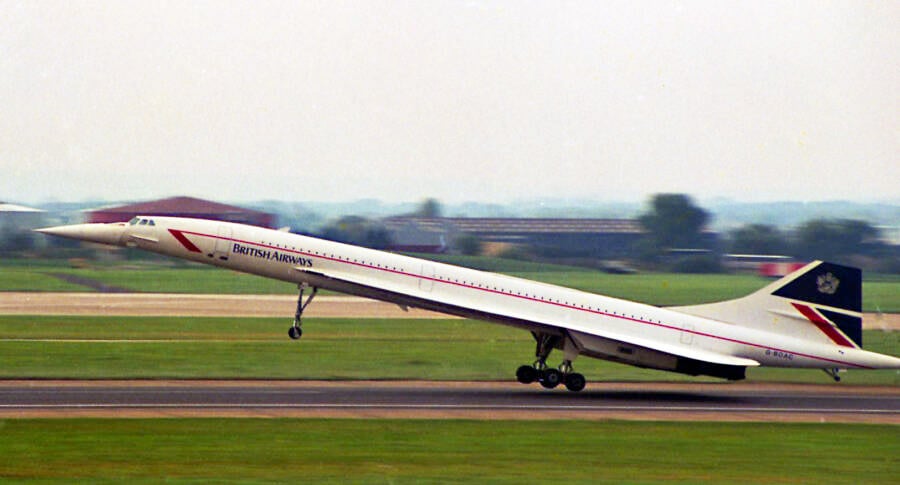
Phillip Capper/Wikimedia CommonsA Concorde plane taking off from England's Heathrow Airport in 1987.
The end of the Concorde came about for several reasons.
For one, the planes were expensive. A single flight consumed almost 7,000 gallons of fuel, a cost that even the expensive tickets couldn't combat forever. (Plus, many Concordes didn't fly at capacity.) For another, they were loud. There was a reason why the flights were largely limited to port cities like New York, London, and Paris. The planes broke the sound barrier and created a sonic boom, which could shatter glass in buildings on the ground.
Large, noisy, and bad for the environment, the writing was on the wall for the Concordes by the turn of the century. And then, something tragic happened.
On July 25, 2000, Air France Flight 4590 — a Concorde jet — crashed shortly after take-off at Charles de Gaulle Airport in Paris. All 109 people onboard the plane were killed, as were four people on the ground.
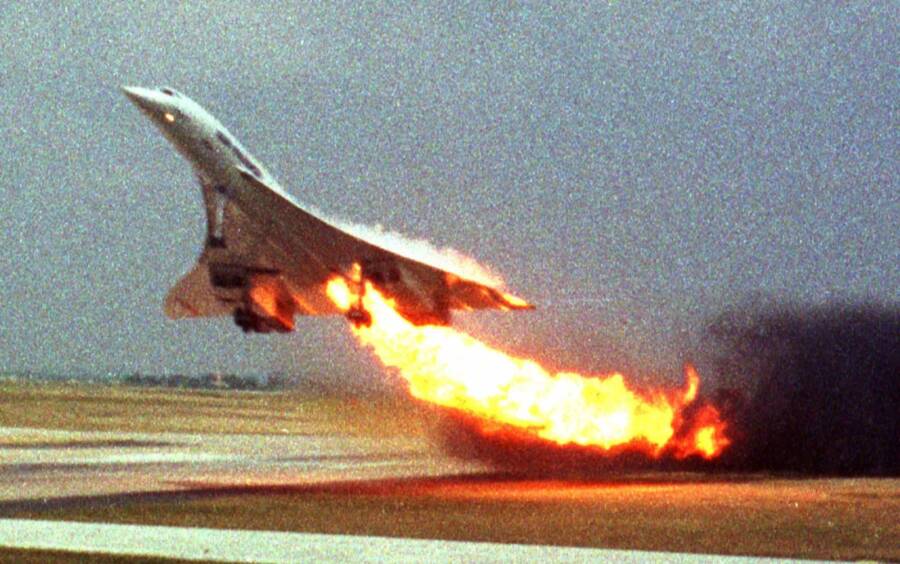
Wikimedia CommonsThe final moments of Air France Flight 4590.
An FAA investigation later found that the tragedy occurred after one of the plane's tires hit a small piece of metal that had fallen off a different plane. The metal "generated a high-pressure surge" in one of the Concorde's fuel tanks, which caused a fuel leak. Then, an engine failed.
This was the only fatal flight in the Concorde's history. But, by then, the supersonic jet was largely seen as unsustainable. The Concorde took its final commercial flight on October 24, 2003. And the remaining planes, which once flew through the stratosphere, were mostly placed in museums.
But even though it's been decades since the age of the Concorde, the plane continues to amaze. Fast, sleek, and luxurious, it belongs to a different time.
"The flight attendants loved being on it; the passengers loved being on it," Richard Quest of CNN, who had the chance to fly on the Concorde five times, later recalled. "You were aware of being part of a very small group of people that were privileged enough to be on Concorde."
After reading about the fascinating history of the Concorde, discover the story of the Spruce Goose, the all-wood plane that flew just one time. Or, learn about the Spirit Of St. Louis, the legendary plane that Charles Lindbergh used to make the first solo, non-stop transatlantic flight.
